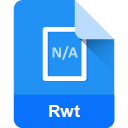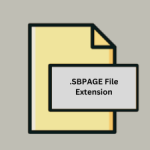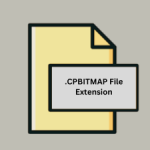.UXF File Extension

UML eXchange Format
| Developer | Object Management Group (OMG) |
| Popularity | |
| Category | Page Layout Files |
| Format | .UXF |
| Cross Platform | Update Soon |
What is an UXF file?
The .UXF file extension represents the UML eXchange Format, a structured XML-based file format used for exchanging UML (Unified Modeling Language) diagrams between different UML modeling tools.
It facilitates the sharing and interoperability of UML models, ensuring that complex system designs can be accurately transferred and interpreted across various software applications.
More Information.
The UXF format emerged from the broader context of UML development, which was initiated by the Object Management Group (OMG) in the mid-1990s. UXF was designed to support the growing use of UML in software design and to facilitate the exchange of UML models among different tools and platforms.
Its initial purpose was to enable seamless integration and interoperability between various UML modeling applications.
Origin Of This File.
The UML eXchange Format was developed to address the need for a standardized method of exchanging UML diagrams.
As UML became a widely adopted modeling language for software engineering, the necessity for a common interchange format grew, leading to the creation of UXF to enhance collaboration and tool compatibility.
File Structure Technical Specification.
UXF files are structured as XML documents. Key components of a UXF file include:
- Header: Contains metadata about the file, such as version and encoding.
- Model Elements: Define various UML elements like classes, objects, interfaces, and relationships.
- Diagrams: Represent the visual layout of the UML elements.
- Attributes and Methods: Detailed specifications of attributes and methods for classes and other elements.
How to Convert the File?
Windows
- StarUML:
- Open StarUML.
- Go to
File > Openand select your UXF file. - After opening, go to
File > Exportand choose the desired format (e.g., XMI, PDF).
- UMLet:
- Open UMLet.
- Drag and drop the UXF file into the application or use
File > Opento select the UXF file. - Use
File > Export asto save the file in a different format like PDF or image formats.
- Altova UModel:
- Launch Altova UModel.
- Open the UXF file via
File > Open. - Convert by choosing
File > Save AsorFile > Exportto select the desired format.
Linux
- Umbrello:
- Open Umbrello.
- Use
File > Opento load the UXF file. - Convert using
File > Exportand select the format you need.
- UMLet:
- Open UMLet.
- Load the UXF file by dragging it into the application or using
File > Open. - Export using
File > Export asto save in another format.
- ArgoUML:
- Launch ArgoUML.
- Open the UXF file using
File > Open. - Use
File > Exportto convert to formats such as XMI or image formats.
macOS
- StarUML:
- Open StarUML.
- Use
File > Opento load the UXF file. - Convert by selecting
File > Exportand choosing the desired format.
- UMLet:
- Launch UMLet.
- Drag and drop the UXF file into the application or use
File > Open. - Use
File > Export asto save in another format like PDF or image formats.
- OmniGraffle (with Plugins):
- Open OmniGraffle.
- Import the UXF file (you may need a plugin or converter).
- Use
File > Exportto save in different formats.
Android
- DrawExpress Diagram:
- Open DrawExpress Diagram.
- Import the UXF file via the app’s import function.
- Export the file in a different format (options may vary).
- Astah UML:
- Open Astah UML on your Android device.
- Import the UXF file.
- Export to a different format using the app’s export function.
iOS
- DrawExpress Diagram:
- Open the app.
- Import the UXF file.
- Export using the app’s export options.
- Astah UML:
- Open Astah UML.
- Load the UXF file.
- Use the export function to convert the file.
Advantages And Disadvantages.
Advantages:
- Standardization: Promotes interoperability between different UML tools.
- Readability: XML-based structure makes it human-readable and easy to debug.
- Flexibility: Supports a wide range of UML diagrams and elements.
Disadvantages:
- Complexity: The XML structure can become complex for large models.
- Tool Support: Not all UML tools fully support UXF, leading to potential compatibility issues.
How to Open UXF?
Open In Windows
- UMLet: A free UML tool that supports UXF files.
- StarUML: A professional UML tool with UXF import capabilities.
- Altova UModel: Another robust UML tool supporting UXF.
Open In Linux
- Umbrello: Part of the KDE suite, supports UXF.
- UMLet: Available for Linux, supports UXF.
- ArgoUML: Open-source UML tool with UXF support.
Open In MAC
- StarUML: Available for macOS and supports UXF.
- UMLet: Cross-platform support including macOS.
- OmniGraffle: With appropriate plugins or converters.
Open In Android
- DrawExpress Diagram: A mobile-friendly UML tool that can import UXF files.
- Astah UML: Available for Android with UXF support.
Open In IOS
- DrawExpress Diagram: Also available on iOS for UML modeling and UXF import.
- Astah UML: Supports UXF on iOS devices.
Open in Others
Web-Based Tools: Platforms like Lucidchart or Creately offer UXF import capabilities, providing cross-platform access via web browsers.













